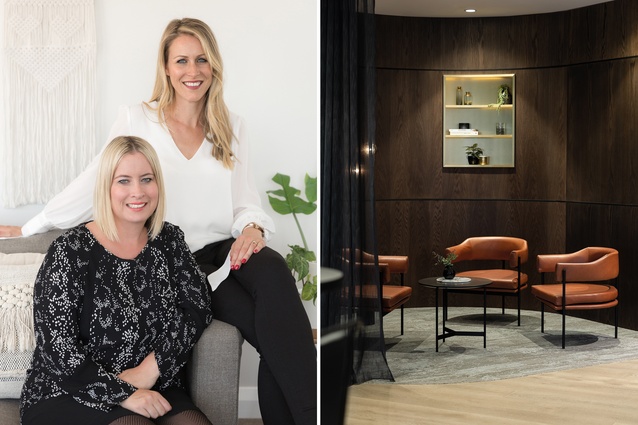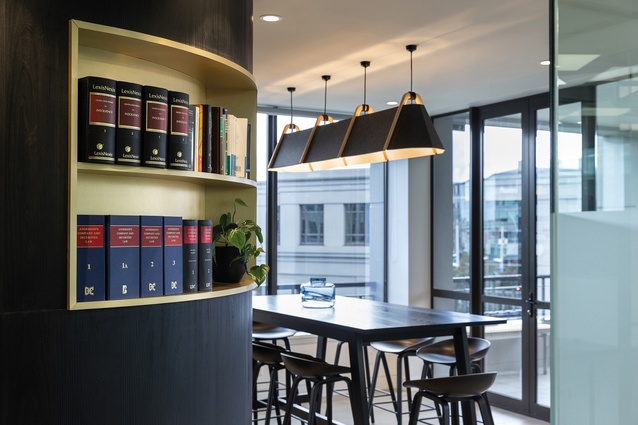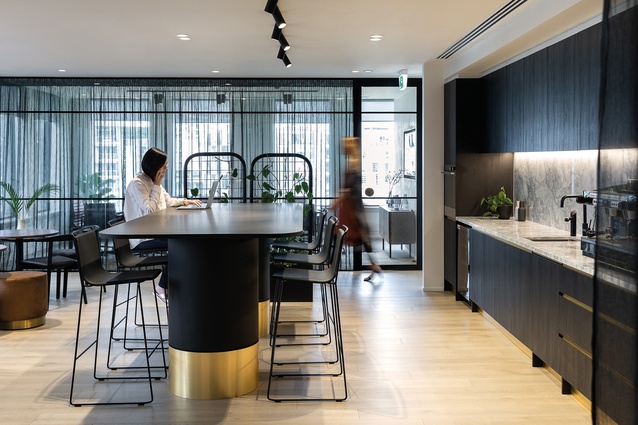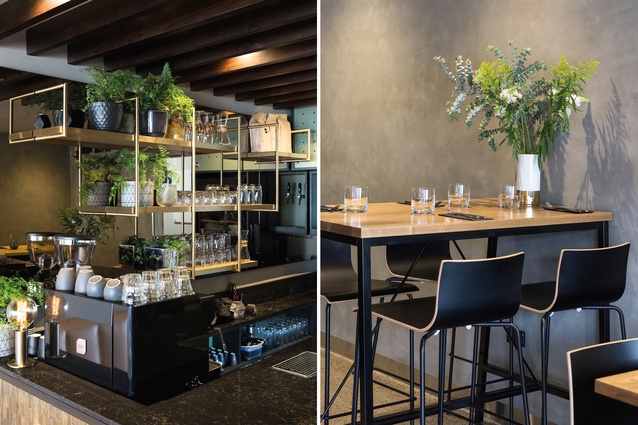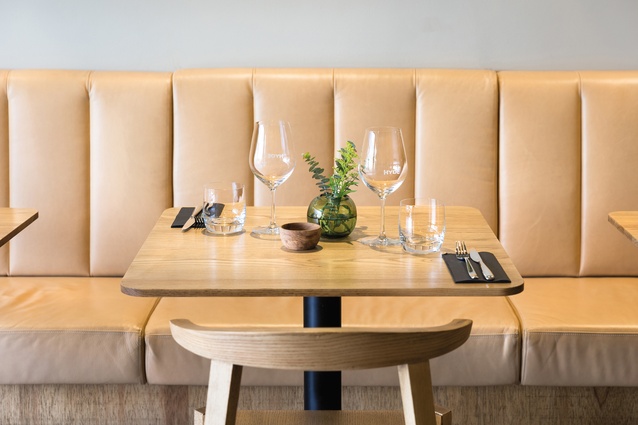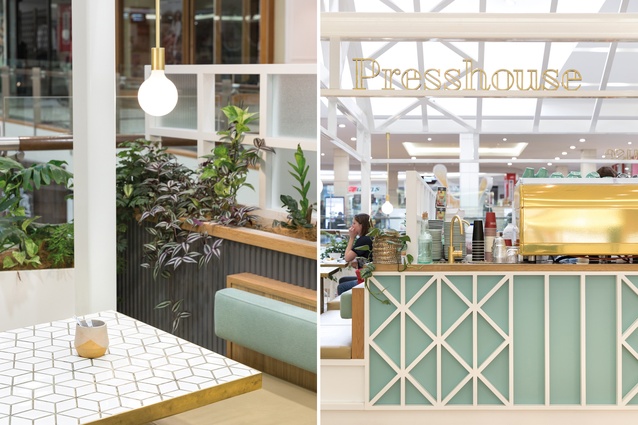Designer interview: Maken
Flexibility, family and a quest to provide personalised service made Chantel Fisher and Kelly Rowe leave their former, larger design firms to start their own boutique version: Maken. Julia Gessler sat down with the pair to find out more.
Julia Gessler (JG): Chantel, what projects did you work on in London?
Chantel Fisher (CF): One of the most exciting projects I worked on there was the Royal Institution of Chartered Surveyors in Westminster. It was a beautiful period building that needed a full renovation. After about six months of being at my job there, they threw me in as, basically, the lead designer. There were a few tears. Lots of late nights, too, but it was amazing and it’s where I found a love of period buildings and that kind of classic, timeless feel of design. To have a project in Westminster and have meetings there every day was inspiring.
JG: Kelly, tell us about your background.
Kelly Rowe (KR): I studied architecture at Victoria University of Wellington and then went to Sydney. I continued my training as an architect and worked there on mostly high-end residential projects, including a foray into high-end interiors. I also worked on a few interesting heritage projects there. One was converting a deconsecrated church in Parramatta into a big Bavarian beer café. I also went to London and worked mostly on residential architecture and interiors. I then came back to New Zealand and took a bit of a side step, working more thoroughly on the interior side of things – hospitality, largely.
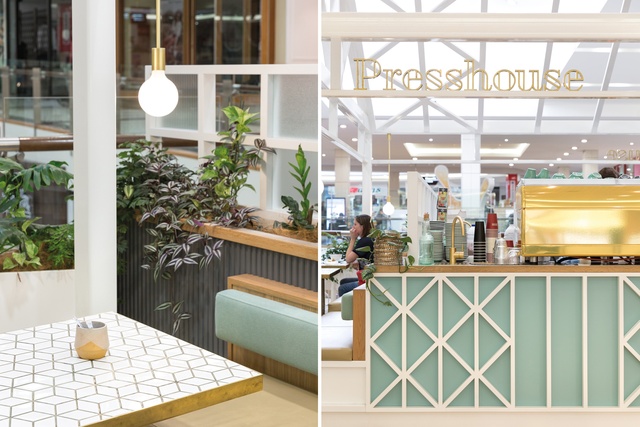
JG: What made you want to establish a firm here, as opposed to London or Australia?
CF: Probably family. We were wanting to come back home to be with family and then start our own [respective] families. Your perspective on life and work changes when you have children. Kelly and I have something in common, in that we both wanted more flexibility and a work-life balance, and better job satisfaction. Because we had been working in those large design firms where you’re churning out projects and spread too thin, there was no time to spend on the design process and the client journey. That’s when we started Maken.
KR: A lot of clients are also doing what I do; they work flexibly with their own families. People understand where you’re coming from. That was probably a large part of it but there were also the design aspects. For example, having more time to understand the client, the brand and the site. For some of the hospitality projects we do, we set up new brands for clients. Some people go through branding firms – and that’s great – but when you have a small client, they don’t have a big budget for that.
JG: How are those initial design conversations between you and your client had? What do you focus on?
CF: Kelly probably specialises more in the hospitality sector and I’m more workplace. They’re a little bit different but they do cross over. I like to engage with the staff to listen to feedback about their existing space, about what they think is needed and how they’re going to be working in the future. Then, obviously, the client has ideas about how they’ll be working in the future and any changes that might need to take place as part of the design.
Incorporating their brand is really important in workplace design: thinking about the impact it has on how the workplace is used and how clients want to engage with it. For Burton’s law firm, we pushed the boundaries of a traditional law firm by having an open reception area with an on-display kitchen, rather than a traditional, closed-off front-of-house area with boardrooms and meeting rooms. We provided those informal meeting spaces.
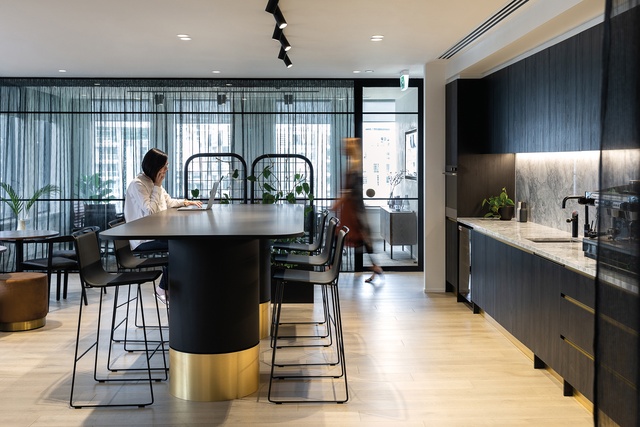
JG: Materiality – can you tell us about some of your favourite materials and colours?
KR: Authenticity is really important for us. So, learning about the root of the concept and the heart of the client is crucial. I’m working on a project that will be going into Westfield Newmarket in September. It’s a new Greek restaurant concept in what’s called the Market Hall.
I’m really taking a step back to look at traditional material techniques in Greek pottery, Greek homes and Greek kitchens, and making it on a domestic scale, which is amazing from a materiality point of view. It’s quite exciting not just asking “What tiles can I find in New Zealand?” but actually sourcing some truly authentic, handmade tiles.
JG: Is that becoming easier to do? Because, pricewise, it used to be expensive.
KR: Because of accessibility, we are likely to use authentic or bespoke pieces in every project – furniture, lighting, tiles, all sorts, these days. We utilise that if it fits for a project.
We are practical and, at the same time, we are always involved in the project budgets and pricing. So, we might want to splurge on something if it’s really important and then pare back elsewhere. We have a good understanding of where to spend money to have an impact.
The whole thing doesn’t have to be glitz, glam and wow, just what the brand needs.
This article first appeared in Interior magazine.


